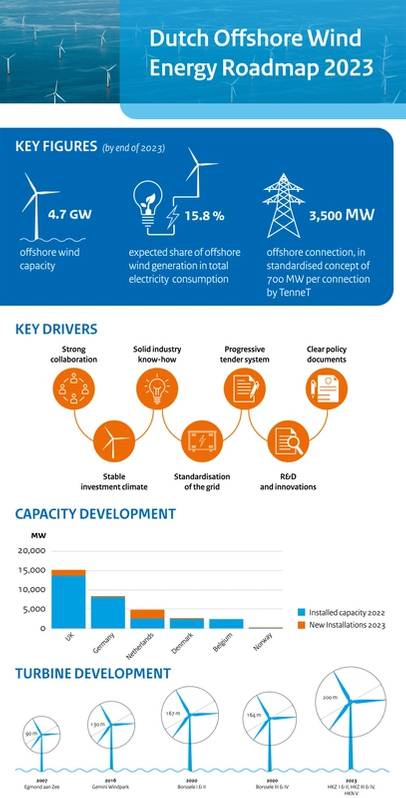

With the cable-laying vessel Isaac Newton, the work vessel Adhémar de Saint-Venant and a remote-controlled cable burial vehicle, the contractor combination Jan de Nul Group/LS Cable & System has completed the installation of the second subsea cable for the offshore wind farm 'west Alpha' completed. In recent weeks, more than 60 km of cable have been laid in the seabed between the beach of Heemskerk and the 'socket' that grid manager TenneT is having built at sea.
Last summer, Jan de Nul pulled four sea cables from the beach of Heemskerk in conduits under the dunes. After the installation of the two sea cables for the Hollandse Kust (north) wind farm, the first kilometers of the two cables for 'west Alpha' were laid capped in the seabed. After the successful installation of the first sea cable, Jan de Nul brought the capped part of the second cable for 'west Alpha' above the water in April – about five km from the beach.
After the coupling by the team of the South Korean cable manufacturer LS Cable & System, the cable was laid back on the seabed. At the same time, the work vessel Adhémar de Saint-Venant appeared off the coast with the UTV1200 unmanned cable-laying vehicle on board. As soon as the Isaac Newton set sail, the cable slowly unwound from the large turntable on board. Later followed by the Adhémar de Saint-Venant for the steering of the UTV1200, which then laid the cable in the seabed.
TenneT had the steel jacket for the transformer platform placed on the seabed 50 km off the coast of Egmond aan Zee last August. The turbines of the wind farm will soon be connected to this socket. With the retraction of the last cable via the cable deck, the job is done for the contractor combination.
Once the tests are completed, TenneT will deliver the connection for 'west Alpha' in the first quarter of 2024. It will then be the turn of operator Ecowende (Shell/Eneco) to have the wind farm built, so that the turbines at sea can produce energy from wind in 2026. With a capacity of 700MW, the amount of sustainable energy that will then be brought ashore by TenneT corresponds to 2.5 to 3 percent of current consumption in the Netherlands.
 Image courtesy Jan de Nul
Image courtesy Jan de Nul



